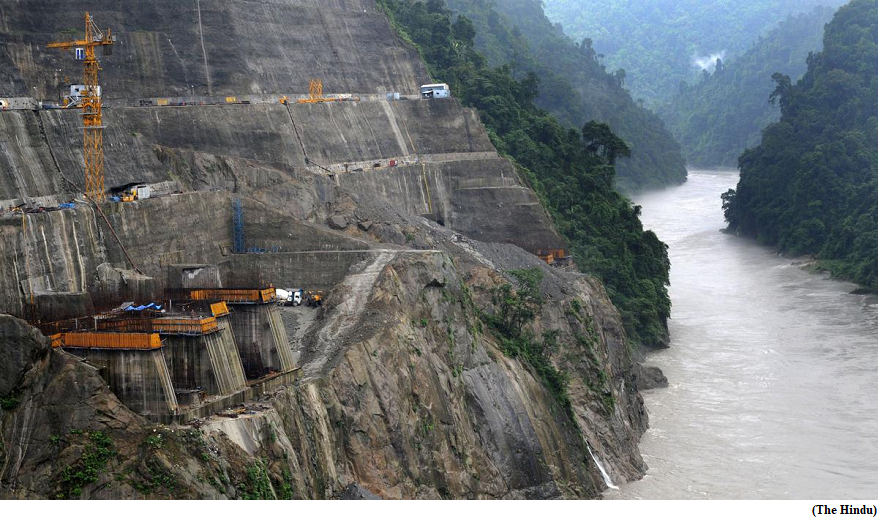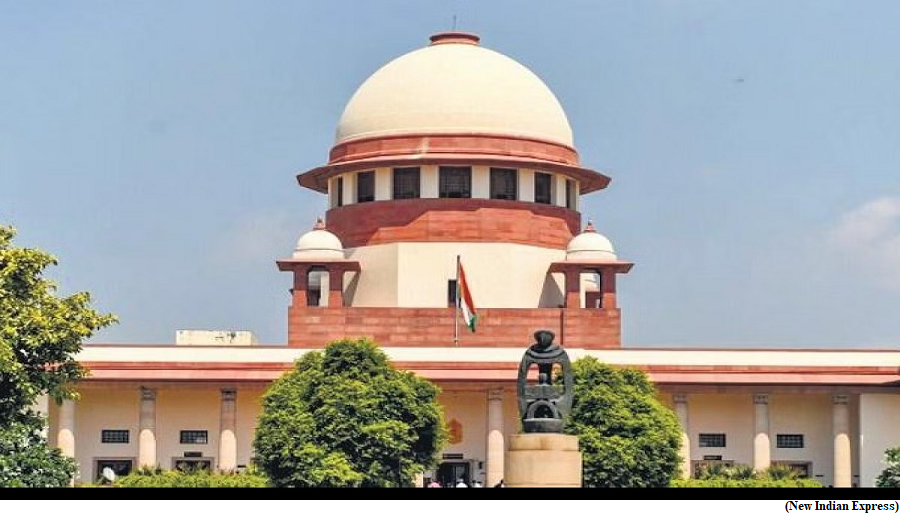Unviable Arunachal hydel projects given to Central PSUs (GS Paper 3, Infrastructure)

Why in news?
- The 12 hydropower projects in Arunachal Pradesh that were officially handed over to three Central public sector undertakings (CPSUs) are economically unviable.
Details:
- Private companies had given up on these projects with a total installed capacity of 11,523 megawatts, which would require at least ₹1,42,000 crore to be executed by the CPSUs.
- The Satluj Jal Vidyut Nigam and the North Eastern Electric Power Corporation Ltd. have been awarded five of these long-stalled projects each, with a total installed capacity of 5,097 MW and 2,626 MW, respectively.
- According to the agreement, the National Hydroelectric Power Corporation (NHPC) would handle two projects (3,800 MW).
Concerns:
- Apart from being unviable, these guarantee disaster for Arunachal Pradesh and downstream regions in Assam.
Background:
- In 2008, the Arunachal Pradesh Government came out with a Hydro Power Policy that entailed payment of upfront money per MW for projects to be set by private and public sector firms.
- The State government signed a total of 233 memorandums of understanding with 159 private and public companies for projects with power generation capacities of 47,000 MW.
Future prospects:
- The CPSUs would start work on at least seven of the 12 projects by March 2024.
- The push for hydropower would contribute to the objective of net-zero carbon emissions by 2070, besides the employment opportunities.
- The development of these projects will help achieve the declared nationally determined contribution target of India’s non-fossil energy capacity to reach 500 gigawatts by 2030.
Yelagiri hut shelters 200 years of hill tribe history
(GS Paper 1, Culture)
Context:
- More than two centuries ago, over 200 Malaiyali tribes people built traditional clay huts on the flat peak of the picturesque Yelagiri hill in northern Tamil Nadu, establishing an all-encompassing system for shelter, storage, farming, and cattle rearing.
- All that remains of that settlement today is a single antiquated hut, juxtaposed with new concrete houses.
- Having been in the hamlet for about 200 years, this last old-fashioned hut of the tribe is owned and maintained by a tribesman.

About Malaiyali tribe:
- The Malaiyali tribe, malai meaning “hill” and yali meaning “people” is spread across Tamil Nadu’s hilly regions.
- The tribespeople were foragers who settled in the upper Nillavur region of Yelagiri and began cultivating its tabletop peak for food.
- Initially living in makeshift huts, they found a permanent solution in the red loam clay abundant in the hills and constructed simple one-room structures that measured 16 by 22 feet.
Key features:
- These huts were built of red clay.
- Made of dry bamboo leaves, the thatched roof is waxed with cow dung to prevent it from leaking during rain. This covering tends to make the house appear deceivingly small from the outside, but it has enough space to house eight people and a paran (attic) to store pots and other household items.
- A unique feature of the munn veedu (mud house) or andara kotai (storage facility) is that it stands on a stilt-like structure made of teakwood.
- This holds the house two feet above the ground to keep rodents at bay and to prevent the house from flooding during torrential rain.
Conclusion:
- It is a standing testament to the tribe’s evolution from foraging to a more modern lifestyle.
SC proposes ‘permanent security units’ for all courts
(GS Paper 2, Judiciary)
Why in news?
- Recently, the Supreme Court has proposed “permanent security units” to guard court complexes across the country, recalling incidents of gunfire and violence on court premises.

Why it matters?
- It is appalling that court premises in New Delhi itself, in the past year or so, have witnessed at least three major incidents of gunfire.
- Preserving the sanctity of a court as a space where justice is administered and the rule of law upheld being non-negotiable, it is critical that judicial institutions take comprehensive steps to safeguard the well-being of all stakeholders.
- Such incidents, that too on court premises, are deeply concerning and pose significant risks to the safety of not only judges but also lawyers, court staff, litigants and the general public.
Key directive by the SC:
- The court has asked the High Courts to prepare “security plans” in consultation with the Principal Home Secretaries, Directors-General of Police and Police Commissioners to protect the courts.
- The security plan may include a proposal for setting up of permanent court security unit(s) in each complex.
- The security plan ought to indicate the strength and source of manpower for these security units, including armed and unarmed personnel and supervisory officers for each unit, the minimum term and mode of deployment of manpower, their list of duties and additional financial benefits, special modules for training and sensitising personnel in matters of court security and so on.
Technology inputs:
- The Bench said the schematics of CCTV camera installation should be laid down on a district-wise basis where the State governments have to provide funds.
- The court stressed the need for digitisation of judicial infrastructure, particularly at the district level.




